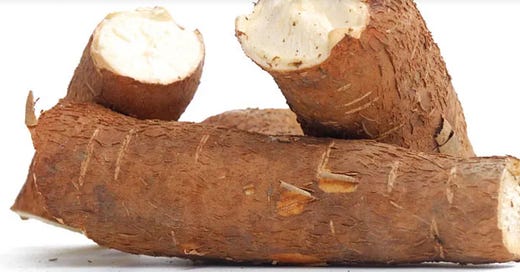Sickle Cell Disease and Phenylketonuria (PKU): You May Have the Genes, But Your Diet Determines Your Symptoms
(A shocker I wrote in 2019, still not taken seriously enough)
Sickle cell trait is much more common among Africans in Africa than among African-Americans. But sickle cell anemia is more common here. How can that be?
The answer is very simple – EPIGENETICS, specifically your diet.
Not all people with sickle cell trait from both parents get sickle cell anemia. An environmental link had long been suspected and has been known for almost 90 years. I was unaware of it, having grown up and trained in Sweden and working in Maine, two corners of the world with almost no sickle cell anemia cases.
The reason for this difference is that the typical African diet includes casava and African yam, foods with significant amounts of thiocyanate. Americans with sickle cell trait don’t typically eat these foods, and that’s why they develop symptoms more often.
In 1932 potassium thiocyanate (KSCN) was used to resolve sickle cell crisis. My reading suggest that this method never did become standard care, and was hardly mentioned at all until 50 years later, when it still didn’t become an accepted strategy. Potassium thiocyanate binds through a process called carbamylation to the site of error on the sickle hemoglobin molecule inside the red blood cell and corrects it. The shape and lifespan of the red blood cell are normalized by this reaction.
A 1986 article that tells the story from 1932 even proposed viewing sickle cell anemia as a thiocyanate deficiency anemia affecting people only if they are homozygous for sickle cell trait, rather than a genetically determined disease.
UptoDate mentions hydroxyuria treatment, which can be very toxic, but makes no mention of dietary modification of sickle cell disease at all.
This is an example of EPIGENETICS, factors that affect how our genes (GENOTYPE) may or may not cause disease or other visible attributes (PHENOTYPE). People who are homozygous for the sickle cell trait and still don’t get the disease because they eat casava have the genotype but not the phenotype, if you will.
But it gets even more interesting. While sickle cells are more resistant to the malaria parasite, and casava eating normalizes the shape and behavior of the red blood cell, this does not increase susceptibility to malaria. This is because casava provides phytochemicals that weaken the plasmodium falciparum. This is an example of what has been called Human Plant Parasite Coevolution. This is explained in a talk by anthropologist Fatima Jackson. I highly recommend watching it.
So, as the saying goes, we are what we eat, or more accurately, what we eat determines or influences the environment of our genes and their tendency to manifest (express) their potential OR NOT.
All this came to my attention somewhat randomly, and I found it shocking that this isn’t more widely known. This knowledge puts Sickle Cell Disease in the same category as PKU, a genetic disease we routinely screen for and prevent by modifying the diet of patients with the PKU genotype. Having had two patients with this disease, born before routine testing started, I am particularly struck by the fact that this old discovery hasn’t become common knowledge 87 years after it was first published.
So there it is, both PKU and sickle cell genotype cause the disease (phenotype) only if the genes are in a certain environment (epigenetics), for example with regards to diet: Too much phenylalanine brings out PKU and too little thiocyanate brings out Sickle Cell Disease.



